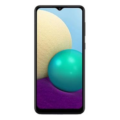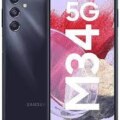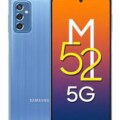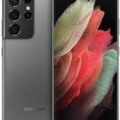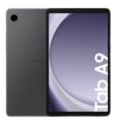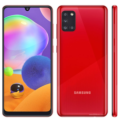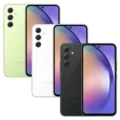- Home
- All Products
- Mobiles
- Samsung Galaxy J3 2017 Price & Specs
Samsung Galaxy J3 2017 Price & Specs
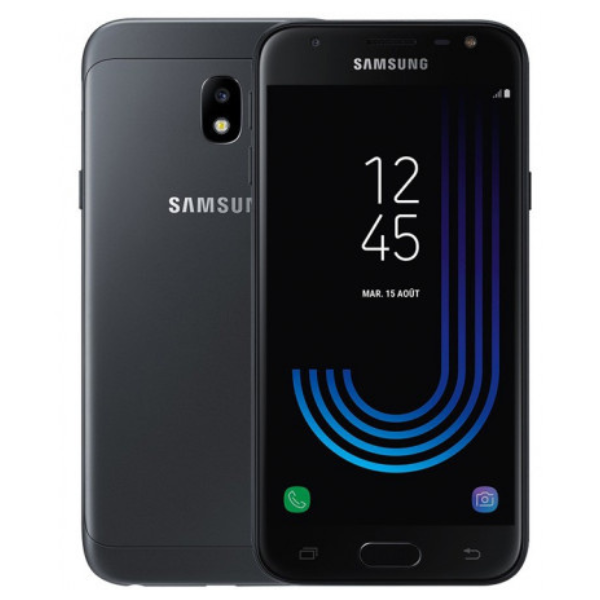

-
Processor: Quad-core 1.4 GHz Cortex-A53
-
RAM: 2GB
-
Storage: 16GB
-
Display: 5.0 inches
-
Camera: 13MP
-
Battery: 2400mAh
Specs
General
| Device Type | Smart Phone |
| Model | Samsung Galaxy J3 2017 |
| Announced | 21 June, 2025 |
| Released | 21 July, 2025 |
| Status | Discontinued |
| Price | 26500 |
Network
| 2G Network |
GSM 850 / 900 / 1800 / 1900 - SIM 1 & SIM 2 (dual-SIM model only) |
| 3G Network |
HSDPA 850 / 900 / 1700(AWS) / 1900 / 2100 |
| 4G Network |
1, 2, 3, 4, 5, 7, 8, 17, 38, 40 |
| SIM <strong>SIM</strong> (Subscriber Identity Module) is a small card that contains mobile network subscriber's account information. This allows the phone using the card to attach to a mobile network. The SIM card is most commonly associated with GSM and UMTS mobile networks. Moving a SIM card from one phone to another allows a subscriber to switch mobile phones without having to contact their mobile network carrier. SIM cards can also be used by a phone to store limited amounts of data, such as phone numbers and text messages. | Standard SIM |
Design
| Type <strong>Design Type</strong> called form factor refers to a mobile phone's size, shape, and style as well as the layout and position of major components of phone. There are three major form factors seen in mobile phones => bar phones, folding phones and sliding phones. | Bar |
| Dimensions | 143.2 x 70.3 x 8.2 mm (5.64 x 2.77 x 0.32 in) |
| Weight | 142 g (5.01 oz) |
| Material | Glass front, aluminum back, aluminum frame |
| Colors | White, Black, Gold, Blue |
Display
| Display Type <strong>Display Technology => </strong> A number of display technologies and types used in mobile phones => TFT (Thin Film Transistor), IPS (In-Place Switching), OLED (Organic Light Emitting Diode), AMOLED (Active-Matrix Organic Light-Emitting Diode), Super AMOLED (an even advanced version of AMOLED), Resistive Touchscreen (Resistive touchscreens contain two layer of conductive material with a very small gap between them which acts as a resistance), Capacitive Touchsceen (Capacitive touchscreen technology consists of a layer of glass coated with a transparent conductor) | PLS |
| Size | 5.0 inches, 68.9 cm2 (~68.5% screen-to-body ratio) |
| Resolution | 720 x 1280 pixels, 16:9 ratio (~294 ppi density) |
| Pixel Density <strong>Pixel Density (PPI)</strong> is refers to the concentration of pixels on a particular display, measured in pixels per inch (ppi). Pixel density is calculated by dividing the diagonal pixel resolution of a display by its diagonal size, higher pixel density better display quality. | (~294 ppi density) |
Software
| Operating System <strong>OS => </strong> Every computer system run on a base software called Operating System (OS). Operating System controls all basic operations of the computer (such as smartphone, PDAs, tablet computers and other handheld devices). The Operating System allows the user to install and run third party applications (apps), apps are used to add new functionality to the device. | Android 7.0 (Nougat), 8.0 (Oreo), upgradable to Android 9.0 (Pie) |
Hardware
| Chipset <strong>Chipset</strong> is a group of integrated circuits designed to perform one or a more dedicated functions, often with real time computing constraints, Popular smartphones are equipped with more advanced embedded chipsets that can do many different tasks depending on their programming. | Exynos 7570 Quad (14 nm) |
| CPU <strong>CPU</strong> (Central Processing Unit) mostly known as processors, CPU processes instructions in order to carry out certain functions that make your device operate properly. Processors are often described as the brain of computers, smartphones and tablets, Smartphones and tablets rely on processors to carry out their every task, Processors are an incredibly important factor in selecting any type of computing device, including your smartphone. | Quad-core 1.4 GHz Cortex-A53 |
| GPU <strong>GPU</strong> (Graphics Processing Unit) is a single-chip processor designed to rapidly manipulate and alter memory to accelerate the creation of images in a frame buffer intended for output to a display, This includes things such as lighting effects, object transformations, and 3D motion. | Mali-T720 MP2 |
| RAM (Memory) <strong>RAM</strong> (Random Access Memory) is a type of computer memory that can be accessed randomly, any byte of memory can be accessed without touching the preceding bytes that allows information to be stored and accessed quickly from random locations. RAM is the most common type of memory found in computer systems, smartphones, tablets and other electronic devices. | 2 GB |
| Internal Storage <strong>Internal Storage</strong> is a data storage space (flash memory) mostly used in smartphones, tablets and other electronic devices where operating system, apps, music, photos, videos, files and other user data Is stored. | 16GB |
| Card Slot <strong>Memory Card Slot</strong> is a special slot for inserting a memory card. Memory cards allow you to expand the phone's built-in memory, A memory card (sometimes called a flash memory card or a storage card) is a small storage medium used to store data such as text, pictures, audio, and video, for use on small, portable or remote computing devices such as mobile phones, mp3 players, digital cameras. | |
| Sensors <strong>Sensors</strong> are electronic components that detects and responds to some type of input from the physical environment. The specific input could be light, heat, motion, moisture, pressure and location, The output is generally a signal that is converted to use in computing systems, a location sensor, such as a GPS receiver is able to detect current location of your electronic device. |
Accelerometer, proximity |
Camera
| Primary <strong>Camera</strong> is able to capture photographs and usually videos, The most important characteristics of a camera are the resolution (measured in megapixels), lens focus type (fixed or automatic), higher megapixel cameras are known to capture higher quality photos, but not always a good measurement of the photos quality. | 13 MP |
| Secondary | 5 MP |
| Video | 1080p@30fps |
| Camera Features | LED flash, HDR, panorama |
| Flash <strong>Flash Light => </strong> There is commonly two types of flash lights are used in camera mobile phones, LED Flash (LED flash offers lower power consumption with drive circuitry that takes up very little room, LEDs can be strobed faster than any other light source), Xenon Flash (xenon flash produces an extremely intense full-spectrum white light for a very short duration) |
Connectivity
| Wi-fi <strong>Wi-Fi</strong> is a popular wireless networking technology using radio waves to provide high-speed network connections that allows devices to communicate without cords or cables, Wi-Fi is increasingly becoming the preferred mode of internet connectivity all over the world. | Yes |
| Bluetooth <strong>Bluetooth</strong> is a wireless communications technology for exchanging data between mobile phones, headsets, computers and other network devices over short distances without wires, Bluetooth technology was primarily designed to support simple wireless networking of personal consumer devices. | Yes |
| GPS <strong>GPS</strong> The Global Positioning System is a satellite-based radio navigation system, GPS permits users to determine their position, velocity and the time 24 hours a day, in all weather, anywhere in the world, In order to locate your position, your device or GPS receiver must have a clear view of the sky. | Yes |
| Wi-fi Hotspot | |
| USB | Yes |
| NFC <strong>NFC</strong> (Near field communication) is a set of standards for smartphones and similar devices to establish peer-to-peer radio communications with each other by touching them together or bringing them into proximity, usually no more than a few inches. | |
| Wireless Charging <strong>Wireless Charging</strong> (Inductive Charging) uses an electromagnetic field to transfer energy between two objects. This is usually done with a charging station. Energy is sent through an inductive coupling to an electrical device, which can then use that energy to charge batteries or run the device. |
Data
| GPRS <strong>GPRS</strong> (General Packet Radio Service) is a packet oriented mobile data service on the 2G and 3G cellular communication system's global system for mobile communications (GSM), Generally, GPRS is used for the purpose of wireless data transfer, such as sharing pictures and videos or browsing the Internet via a mobile phone connection. | |
| EDGE <strong>EDGE</strong> (Enhanced Data GSM Environment) is a wireless network technology generally considered the next step in the 2G network offers data transfer rates up to four times faster than ordinary GSM networks, Generally, EDGE is used for the purpose of wireless data transfer, such as sharing pictures and videos or browsing the Internet via a mobile phone connection. | |
| Speed | HSPA 42.2/5.76 Mbps, LTE Cat4 150/50 Mbps |
Messaging
| SMS <strong>SMS</strong> (Short Messaging Service) is a text messaging service component of phone, Web, or mobile communication systems. It uses standardized communications protocols to allow mobile phone devices to exchange short text messages over the networks. | No |
| MMS <strong>MMS</strong> (Multimedia Messaging Service) is a standard way to send messages that include multimedia content (audio clips, video clips and images) to and from mobile phones over wireless networks using the WAP protocol. | |
| Email <strong>Email</strong> (Electronic Mail) is a system for receiving, sending, and storing electronic messages, Similar to a letter, email is text messages that may contain files, images, or other attachments sent via the internet to a recipient by using applications and software prograps. An email address is required to receive email, and that address is unique to the user. |
Media
| Audio Playback | |
| Video Playback | |
| FM Radio | |
| Loudspeaker |
Battery
| Battery Type <strong>Battery Type => </strong> Cell phones run on various kinds of batteries depending on the manufacturer, phone size or shape and features. There are basically four types of cell phone batteries => Lithium Polymer, Lithium Ion, Nickel Metal Hydride and Nickel Cadmium. | Li-Ion (Lithium Ion) |
| Placement | Fixed |
| Standby <strong>Standby Time</strong> is the total amount of time that you can leave your is fully charged, turned on and ready to send and receive calls or data transmissions before completely discharging the battery. | up to 17 days |
| Talk Time <strong>Talk Time</strong> is the longest time that a single battery charge will last when you are constantly talking on the phone under perfect conditions, Ambient temperature and highly dependent on the cellular network environment such as the distance to the closest cell network tower. | up to 23 hours |
Table of Contents
Samsung Galaxy J3 2017 Price in Pakistan
Samsung Galaxy J3 2017 price in Pakistan is probably lower, though, as it is now an older model and has been replaced by several newer Samsung Mobiles like Samsung Galaxy Grand Prime Pro and Samsung Galaxy Grand Prime but the new Samsung Galaxy J3 2017 price in Pakistan is around 26,500 Check websites like iShopping, OLX, or Daraz, to find the most recent Samsung phones prices in Pakistan. Remember that prices on these websites can vary, and you should always exercise caution when buying from individual sellers.
Is The Samsung Galaxy J3 (2017) Waterproof Or Water-Resistant
No, the Samsung Galaxy J3 (2017) is NOT water resistant.
Is The Samsung Galaxy J3 (2017) Still Being Sold?
No, the Samsung Galaxy J3 (2017) was discontinued.
Is The Samsung Galaxy J3 (2017) 5g Ready?
No, the Samsung Galaxy J3 (2017) is NOT 5G Ready.
Can The Samsung Galaxy J3 (2017) Charge Wirelessly?
No, the Samsung Galaxy J3 (2017) CANNOT charge wirelessly.
Is The Samsung Galaxy J3 (2017) Still Being Sold?
No, the Samsung Galaxy J3 (2017) was discontinued.
Does The Samsung Galaxy J3 (2017) Support Dual Sim Cards?
Yes, the Samsung Galaxy J3 (2017) supports dual sim cards.
Does The Samsung Galaxy J3 (2017) Support Fast Charging?
No, the Samsung Galaxy J3 (2017) does NOT support fast charging.
Was The Samsung Galaxy J3 (2017) Discontinued?
Yes, the Samsung Galaxy J3 (2017) was discontinued.
What Is The Release Date Of The Samsung Galaxy J3 (2017)?
Samsung Galaxy J3 (2017) was announced in 2017, June. Released 2017, July.
What Is The Resolution / Screen Size Of The Samsung Galaxy J3 (2017)?
The Samsung Galaxy J3 (2017) has a 5.0-inch display with a 68.9-cm2 (68.5% screen-to-body ratio), 720 x 1280-pixel resolution, and a 16:9 aspect ratio.
What Is The Samsung Galaxy J3 (2017) Battery Life?
A typical phone has a battery capacity of 2500 mAh, which lasts around a day. The Samsung Galaxy J3 (2017) features a Li-Ion 2400 mAh, non-removable battery. However, a larger battery (4000 mAh, for example) may typically require fewer recharges, which extends your phone’s battery life.
How long does a Samsung J3 2017 battery last?
Standby time is up to 17 days and Use/Talk time is up to 23 hours.
What Android version is Samsung J3 2017?
Android 7.0
How big is the screen on a Samsung J3 2017?
The Samsung Galaxy J3 (2017) comes with a 5-inch display carrying a 720 x 1280 HD resolution.
Disclaimer: The Samsung Galaxy J3 2017 prices listed on this page are sourced from local shops and dealers and are updated daily. While we strive for accuracy, we cannot guarantee that the price information of the Samsung Galaxy J3 2017 provided on this page is 100% correct, as human error is possible. We recommend that you visit your local shop for exact pricing information. Thank you for your understanding.



